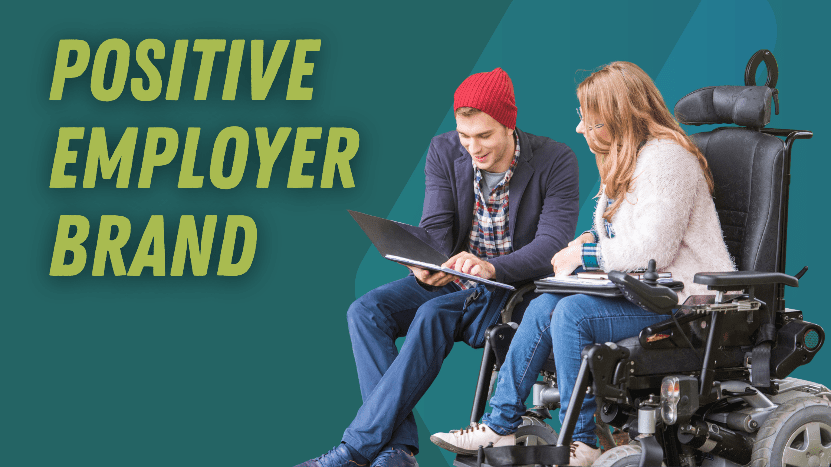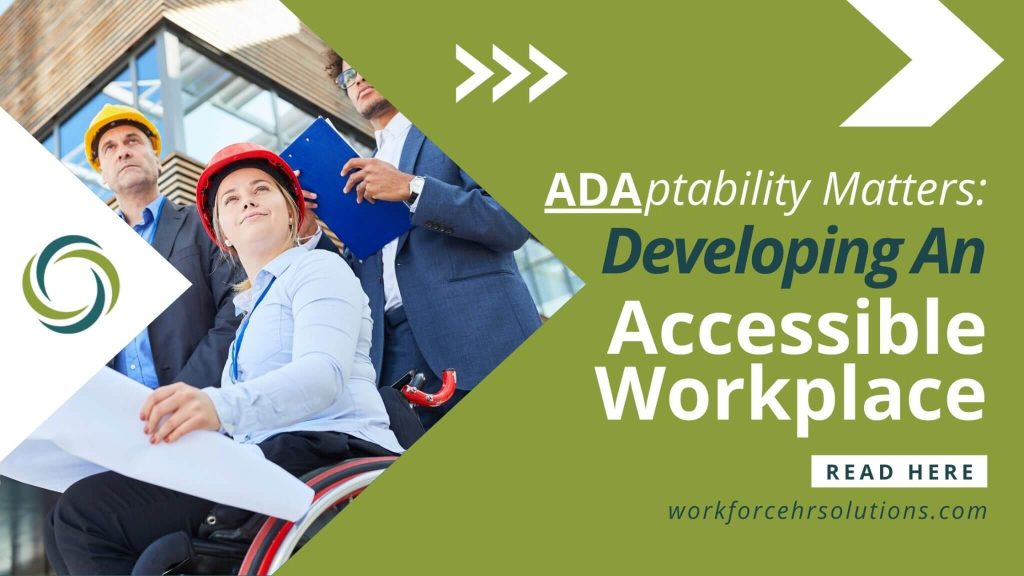It’s amazing how being out on social media and having our selfies plastered all over the screens, does not take away the mystery of a person. In fact, it makes you even more curious seeing someone’s photo and not have any idea about his/her story.
Remember that kid sitting behind you during grade school? She was so quiet and you’ve only ever heard her say three words, and it’s been half a year. Then on your school’s talent show she surprised everyone with her deep and powerful voice that could put even Whitney Houston to shame.
To everyone, she was a kid who didn’t have much to tell. Who knew that her singing could tell a million tales?
Like her, everyone has a talent or skill that’s waiting to be revealed. All it takes is opportunity.
This struggle to have access to opportunities created initiatives for diversity, equity, and inclusion (DEI), and prompted social legislations for the underrepresented groups. One of these is the Americans with Disabilities Act (ADA) which protects people with disabilities from discrimination in all social situations, including employment.
What is Title I of the Americans with Disabilities Act?
The ADA was signed into law in 1990. Title I provides for people with disabilities’ civil rights against discrimination in the workplace and requires employers to give them reasonable accommodations for applications, job interviews, and when they become employees.
Who Are People With Disabilities?
The law defines a person with disability as someone who has “a physical or mental impairment that substantially limits one or more major life activities; has a record of such an impairment; or is regarded as having such an impairment.”
This definition is a nod to the long and winding fight for getting the message across that not all disabilities are readily apparent. It can be physical yet invisible, like AIDS and HIV, or mental, like autism spectrum disorders.
What’s In It for You?
Aside from avoiding hefty lawsuits, ADA compliance can reap you other benefits such as:

It opens your doors to 61 million talents with disabilities.
According to the Centers for Disease Control and Prevention (CDC), 1 in 4 adult Americans (26%) are living with some type of disability, and only 19.1% of them are employed.
This means that there are a lot of untapped talents you can reach out to, to expand your recruitment pool.

Genuine adherence to the ADA will help you build a positive image within and outside your organization. It will make employees feel good working for you and encourage them to invite friends with or without disabilities to work for you.
Furthermore, it sends the message that you go above and beyond for your employees’ welfare, regardless of their personal circumstances.

A diverse workforce fuels creativity and innovation. It provides your organization and decision makers layers of perspectives with opinions from employees who come from different backgrounds and have different struggles and solutions to offer.
How to Develop an Accessible Workplace
There is no hard and fast rule that states what a company must do for workplace accessibility.
What the law requires is for you to provide reasonable accommodations that would eliminate any barrier that may hinder an applicant with disability to apply for a job, and prevent an employee with disability to carry out his/her responsibilities.
Moreover, the ADA encourages employers to go above and beyond what the law requires of them.
Thus, an accessible workplace is one that transcends the layout of your office space or building.
1. Organizational Accessibility
Organizational accessibility involves the readiness of the company’s management, people, and culture to accommodate individuals with disabilities.
This step must first be undertaken to lay down the foundation for, and institutionalize, all ADA initiatives and practices, thereby cultivating a prejudice and bias-free company culture.
Get started by training your managers and people about ADA compliance and establishing policies and procedures relating to:
- Application, interview, and onboarding process of people with disabilities;
- Anti-discrimination in the workplace;
- Access to equal opportunities for career development;
- Special benefits like schedule flexibility;
- Accommodation requests management.
Extra Mile: You can also implement the following:
- Train all employees on sign language;
- Employ a sign language interpreter during meetings;
- Provide a flexible or remote work option;
- Provide mental health resources and support for employees with disabilities.
2. Physical Accessibility
Meanwhile, to achieve physical accessibility, your office space or building must be designed to provide ease of access by equipping it with accessibility signage with Braille, ramps, height-adjustable desks, wider and low-tensioned doors, grab bars, and other furniture accommodation as needed.
You are not required to adhere to this unless you have an applicant or employee with disability, or you are located in a commercial space, or operate places for public accommodation. However, it wouldn’t hurt to be ADA-ready ahead of time, instead of being reactive and providing accommodations only when someone with a disability walks in. This will help you avoid the disruption of your operations and save on costs for rush fees or office redesign.
3. Technical Accessibility
Remove technical barriers through website optimization and use of assistive technologies like screen-reading software and videophones for facilitating communication.
Between the two, the spotlight is currently on website accessibility, as it not only involves your applicants and employees, but also the general public. As more people rely on websites for brand research and use them to make informed decisions, there is a clamor for companies to prioritize the optimization of websites for ADA accessibility.
Here are some of the best practices which you may consider:
• Conduct a site audit
There are free tools available like the WAVE Web Accessibility Evaluation Tool which helps instantly spot missing alt text or styles.
• Put alt text on your images
Alternative text (alt text), sometimes referred to as alt tags, attributes, or descriptions, are descriptive words that provide context as to what a web image is displaying. This helps search engine crawlers to properly index your image.
Alt tags matter in ADA compliance because they are used by screen-readers to describe an image to a person who cannot see or have difficulty understanding or interpreting an image’s purpose.
To be effective, your alt text must be specific and provide context on the image’s relation to the article or page content.
- Improve the website’s color contrast.
Some people with visual disability have a hard time reading text that has poor or insufficient color contrast. Do this by combining light text to a dark background, or dark text to a light background.
- Do not use colors to provide instructions.
Avoid using color cues like having required information fields in red, as people with color blindness cannot distinguish some colors, and screen readers cannot tell their purpose. Instead, be more specific when providing instructions.
- Ensure that your videos have captions.
To accommodate individuals with hearing impairments, make sure that all your videos have captions for them to easily comprehend the video’s message. You can do this by enabling auto-generated captions or create them manually for accuracy.
Aside from the above, you can also refer to the Web Content Accessibility Guidelines (WCAG) and the Section 508 Standards for guidance.
The Bottom Line:
“Reasonable accommodation” is a vague term and it is up to you to determine how far you can go, in designing a workplace where everyone can adapt and thrive. However, there are three words that you may always run back to:

Diversity, not only in the workforce, but also in the management. Having someone with a disability in the leadership team will make them feel represented and give them hope that they also have an opportunity for growth and promotion.

People with disabilities must be provided with the same opportunities for career development as other employees. Sometimes this means that they need to be given an extra boost or granted special accommodations to eliminate any organizational, physical, or technical barriers that they experience.

They must be protected from all sorts of discrimination and offered all benefits that are given to other employees.
For example, an employer is not required to give an employee with disability a special parking space, BUT, if free parking is a benefit given to all employees, then the employer is obliged to grant the same to an employee with disability, albeit with special accommodations that will help the latter fully enjoy the benefit.
Let us help you lay the ground work for ADA compliance. Talk to our people and culture experts today!

